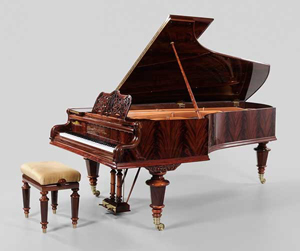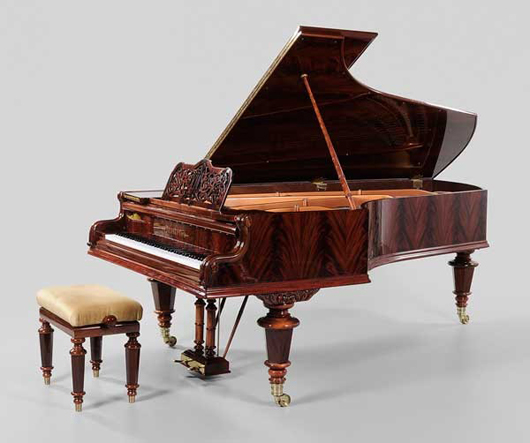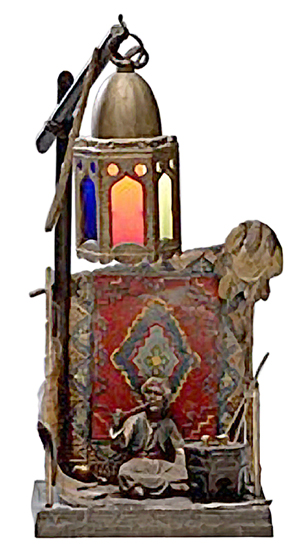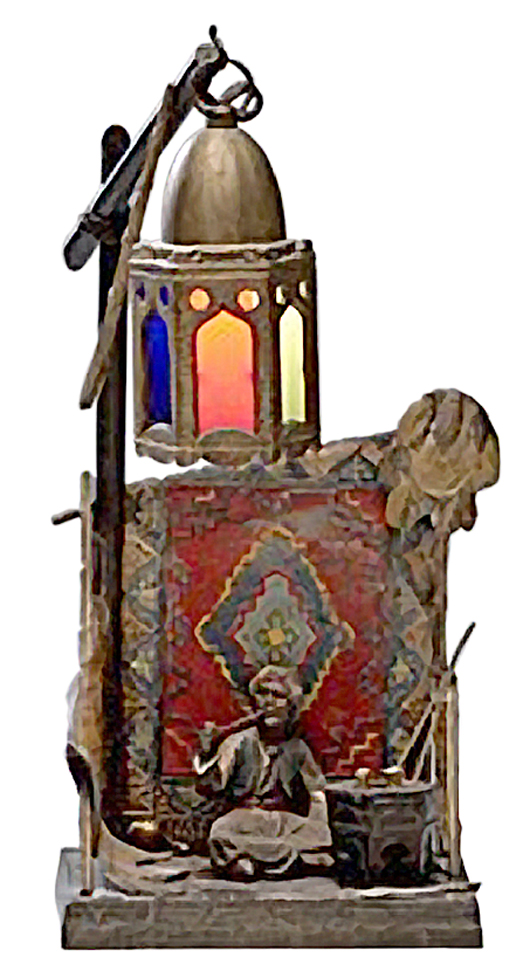
ASHBURNHAM, Mass. (AP) – The value of listening to a Brahms piece on a 19th century Streicher grand piano must be heard.
Collecting grand pianos so one can hear what musical pieces from their respective eras would have sounded like on the instruments of their time may sound unusual to some.
It certainly did to WCVB Channel 5’s Chronicle, which has included Patricia and E. Michael Frederick’s collection of historical grand pianos in a segment on “Unusual Collections.”
The Fredericks say they love to have a chance to spread the word about their piano collection, which has attracted accomplished musicians and beginners alike from all over the U.S. and the world since opening their Historical Piano Study Center at the former Stevens Library Building at 30 Main St., adjacent to Town Hall, in 2000.
Just don’t call it a museum.
Though the pianos are very old, some dating as far back as the 1790s, the Fredericks say their pianos are meant to be played, rather than observed liked antiques on a shelf.
“I’m sure they make beautiful furniture, but looking at them that way is boring and dull,” E. Michael Frederick, 67, said.
“We didn’t get them to be eye candy,” Patricia Frederick, 68, said. “We got them because we wanted to see how music sounded when it was written.”
According to the Fredericks, people in the 1800s bought new pianos every few years, the same way people do with computers today, because they were constantly changing and evolving and new sound qualities were being sought.
In that era, they said, pianos from different countries, and even pianos from different makers within the same city, all sounded different, unlike the homogenous sounds of pianos made today.
“People today don’t want to play a piano in one city and have it sound and feel completely different in another,” Patricia Frederick said.
What they are losing out on, however, are the sounds composers intended them to hear when their pieces are played on the proper instruments, the Fredericks believe.
“When people come here and play on our pianos, they hear things in the music they’ve never heard before,” E. Michael Frederick said. “These effects were easy to accomplish with the piano the composer had, but the modern piano has different goals. Piano companies used to be managed by people who designed pianos. Today, the president is a businessman who couldn’t design a piano if his life depended on it. He relies on merchandising and what he thinks will sell.”
Patricia Frederick said keys on pianos in the past were much different from those of today. They often had rounded edges and didn’t require heavy plunking because the keys had shorter distances to drop and were lifting lighter hammers, resulting in a light, fluttery playing style. This change in design has affected the posture and style of most pianists, he said.
“We’re very slow, heavy and almost arthritic today in the way we perform,” he said. “The way people look at music has changed also. We tend to think of people in earlier periods as being more staid and respectable than they actually were.”
Recording is another factor that has changed people’s expectations about music, E. Michael Frederick said. Today, wrong notes can be digitally changed and performers are expected to sound as perfect and polished as their recordings suggest.
“Even the best pianists miss notes,” Patricia Frederick said. “People didn’t expect to have a canned, perfect performance each time.”
Before opening the center in 2000, the Fredericks lived with all of their pianos crammed inside the various rooms of their Water Street home, some turned on their sides to fit several in each room. Patricia Frederick has even created a layout map of the rooms of their house to show all of the inconvenient places where they had been stored.
Today, their collection includes 25 pieces—Brodmanns, Bosendorfers, Erards, Bluthners, Streichers and many others—at the Historical Piano Study Center and an additional nine still kept at home. The collection includes mainly Viennese and Parisian pianos, though there are some from London, Leipzig, New York and Boston. A piano makes it into their collection only if pieces from that time and location are still widely played and appreciated.
The Fredericks have been hosting historical piano concerts in the spring and fall at the Ashburnham Community Church at 9 Chapel St. since 1985. Interest has grown immensely over the years. Patricia Frederick said they began with only two or three shows each season and have expanded to six. The events last year averaged about 100 people per show, she said.
Though the Fredericks don’t plan on retiring anytime soon, they are looking for people or organizations interested in “protecting the ecological diversity in classical music” and keeping the center open once they do.
“To do something like this right, you have to create the people who will be your successors,” Patricia Frederick said, to ensure the pianos are properly cared for and preserved for future use.
___
Online:http://www.frederickcollection.org
Copyright 2012 Associated Press. All rights reserved. This material may not be published, broadcast, rewritten, or redistributed.
AP-WF-01-15-12 0601GMT
ADDITIONAL IMAGE OF NOTE




